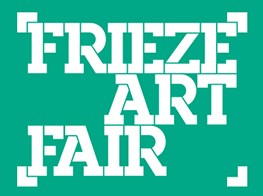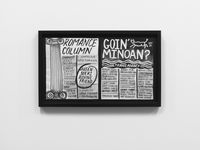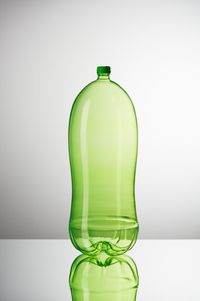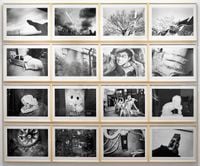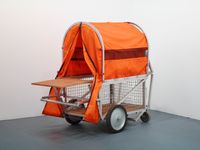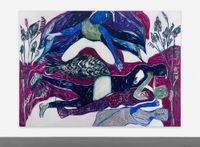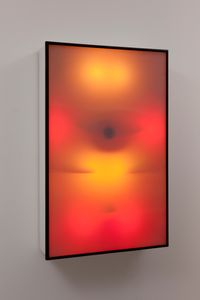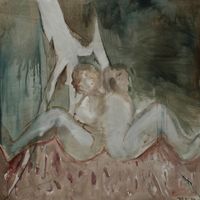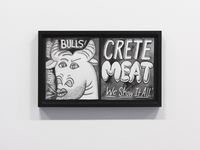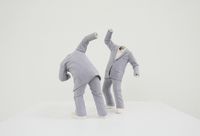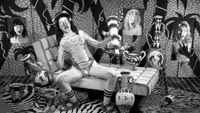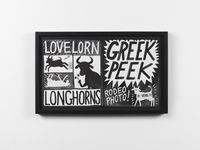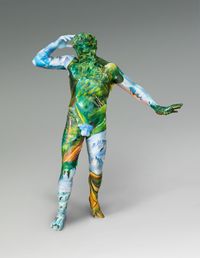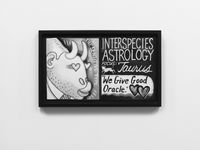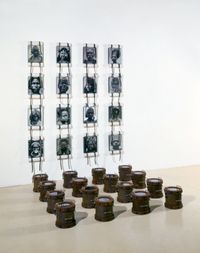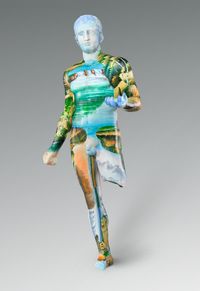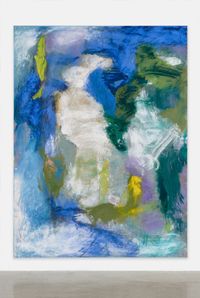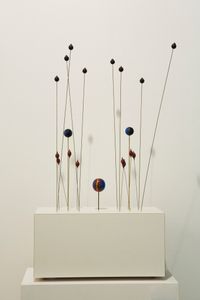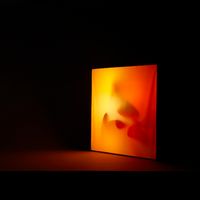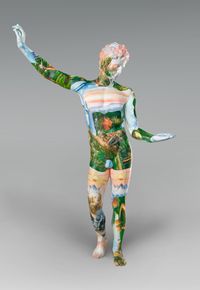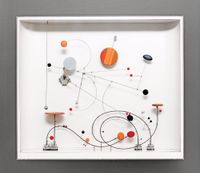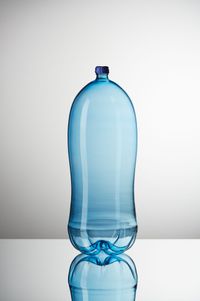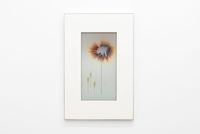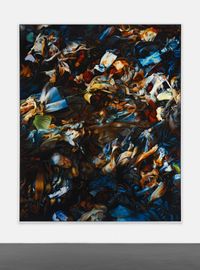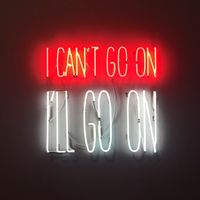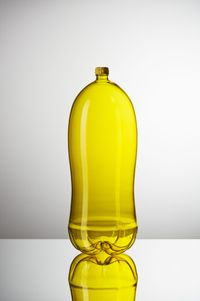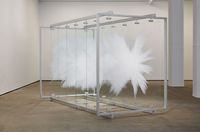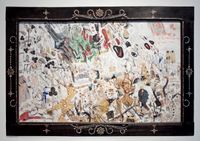Top 5 booths at Frieze New York 2016

A trip to Frieze New York requires a full day’s devotion. Located on Randall’s Island, a mostly uninhabited strip of land in the middle of the East River, the fair included over 200 booths clustered underneath a sprawling, light-filled white tent. The sheer magnitude of the offerings makes it impossible to actually see everything being shown unless one takes multiple breaks at the plethora of restaurants, coffee shops and outdoor barbeques scattered between the fair's six sections. Even with careful consideration, one leaves wondering what might have been seen if only for another day in the space. Below, we round up the top five booths at Frieze New York 2016.
Cooper Jacoby at Mathew Gallery
Located in the Frame section of the fair, which features solo exhibitions presented by galleries founded in or after 2009, a booth of works by Los Angeles-based artist Cooper Jacoby stood out for its attention to detail. Presented by Mathew Gallery, which has locations in both Berlin and New York, Jacoby’s works were inspired by the city of Los Angeles, and the art fair itself. In his practice, Jacoby is interested in making visible the sorts of physical infrastructures that are built to be the opposite: sewer systems, drainage pipes, support columns, and gutters, for example. At Frieze, he invited viewers to step up on a platform that resembled a metal grate—the grate is the material used to create the base of the floor in the tent, which is then covered in an innocuous gray carpet. Upon the platform, viewers were, in a sense, able to see through the floor—not to the structure, but rather, to the material used to cover the structure, creating a strange sort of awareness of the false permanence of the art fair.
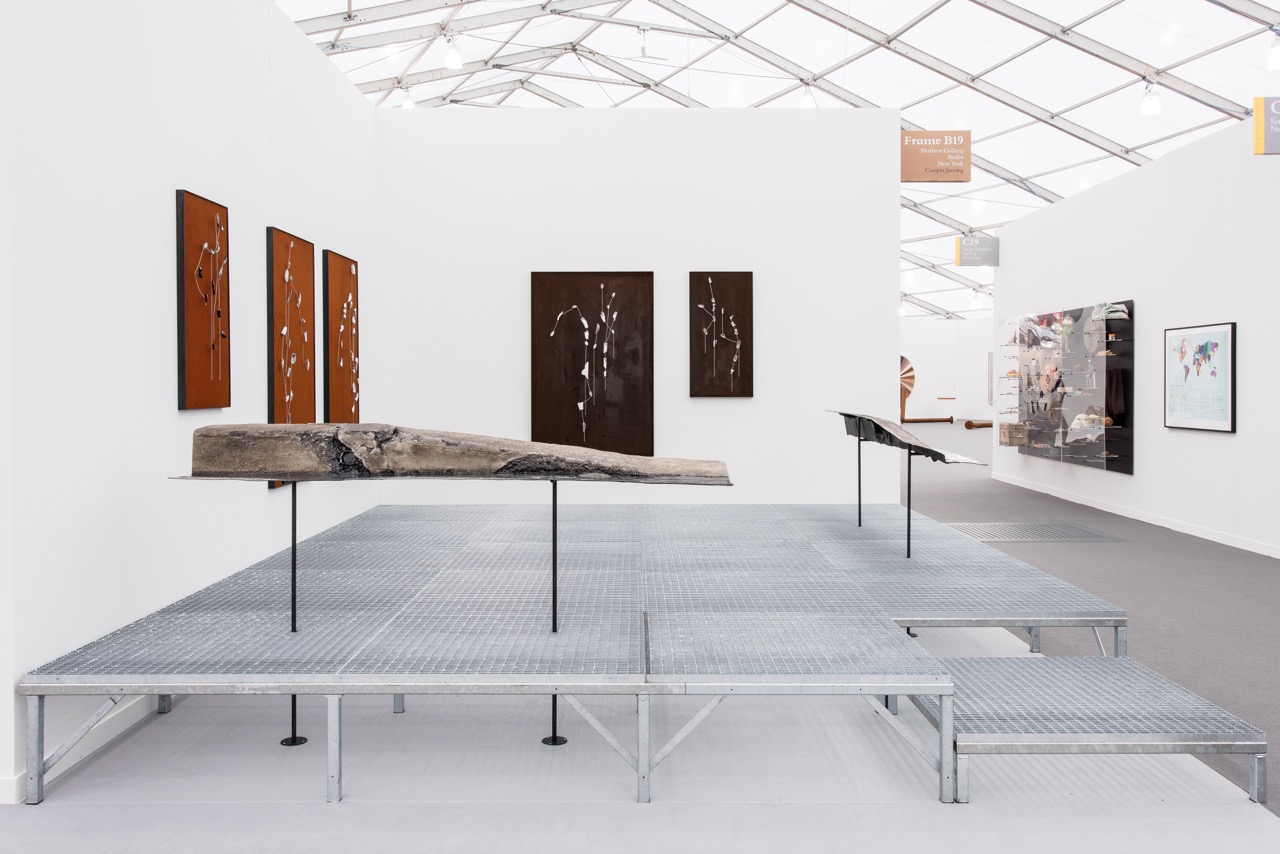
The fair was referenced not only in the structure of the display, but also in Sluice, a series of works from 2016 created using polished pieces of Fordite, a material created over time from the runoff of enamel spray paint in automobile factories. In the factories, it had no value. Cut and polished, the material resembles crystals, or hand-made beads. Jacoby strung pieces of it between jewelry chains that he stripped of gold plaiting using a chemical process, and attached it to honeycomb fiber core slats using cpu connector pins generally found in the motherboards of computers. The honeycomb fiber core is the same material used to construct the walls of the stalls at Frieze; in Jacoby’s work the structure of the fair was again elevated to auratic status. The slats also became the backdrop for the strange, objectively worthless pieces of ephemera that given their placement in an artwork at an art fair, acquired the appearance of having immense value; they resembled strange jewels from a forgotten culture memorialised in a natural history museum. Paired with works from his Stagnants series, wall-mounted sculptures cast from pieces of gutter pipes Jacoby pulled from the Los Angeles sewage system, the booth raised questions about how we value objects depending on their context.
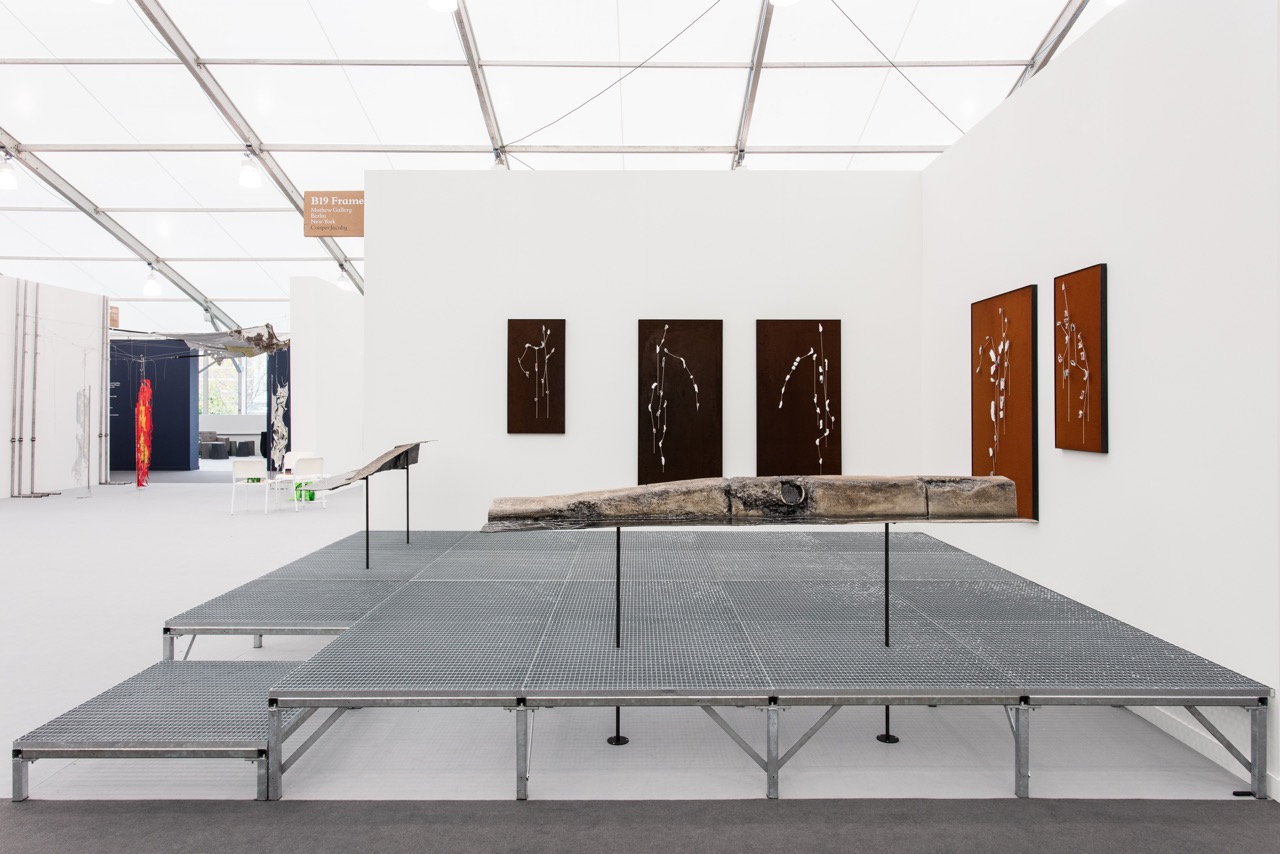
William Kentridge at Marian Goodman
At an art fair it’s easy to pass over big name artists shown by big name galleries in quest of the undiscovered, or underappreciated. However, it was impossible to ignore Marian Goodman’s gorgeous presentation of works by South African artist William Kentridge in a centrally located double booth. It featured murals created around the time of Kentridge’s retrospective at the Ullens Center for Contemporary Art in Beijing at 2015, which were inspired by Chinese literati paintings, the Chinese cultural revolution, and the student revolts in Paris in 1968; a series of studies created for Kentridge's production of Alban Berg’s Lulu, which was staged at the Metropolitan Opera in New York in 2015; a conceptual self-portrait molded entirely from slogans painted on newsprint; and large bellows made for the live performance of Refuse the Hour, a multimedia opera first presented by the artist at dOCUMENTA 13 (2012). In a sense, the booth functioned less as a sales pitch, and more like an overview of Kentridge’s work from recent years.
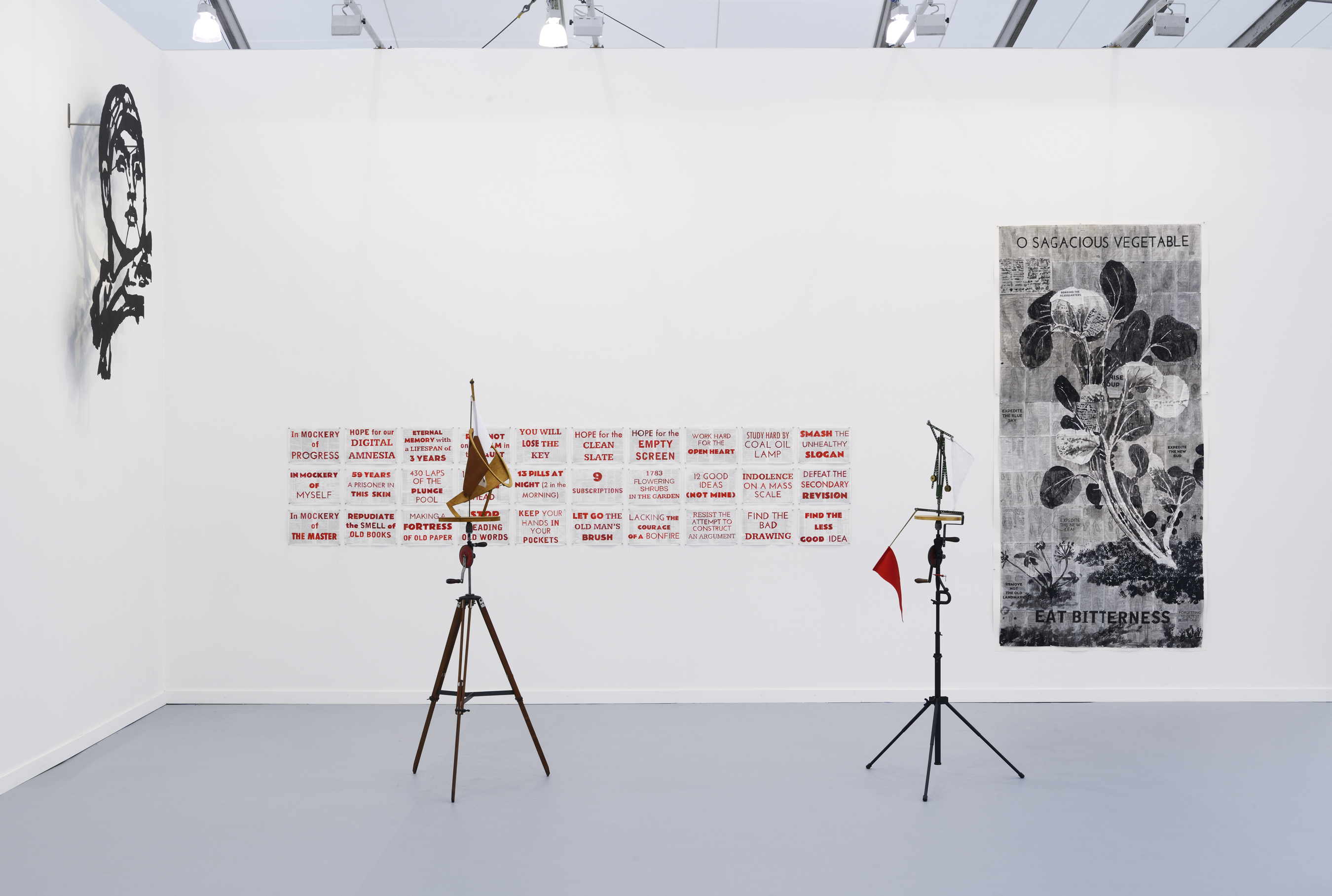
The self-portrait, titled In Mockery of Progress, functioned particularly well in the context of an American art fair, where we are in the midst of an election ripe with slogans like ‘Make America Great Again’ which aim to capture the mood of a nation. Kentridge’s slogans for himself were more personal: ‘430 Laps of the Plunge Pool’, ‘59 Years a Prisoner In This Skin’, and ‘Rely Not on the Film in the Vault’. Together, they read as a capitulation to solipsism from an artist whose work can be so angrily political, and so overtly outward looking—but in the capitulation there was an aging artist laid bare. In that bareness was beauty—the gorgeously rendered Iris (2014), a large-scale Indian ink painting on newsprint, resembled a monochrome reproduction of a painting of flowers by Manet, for example.
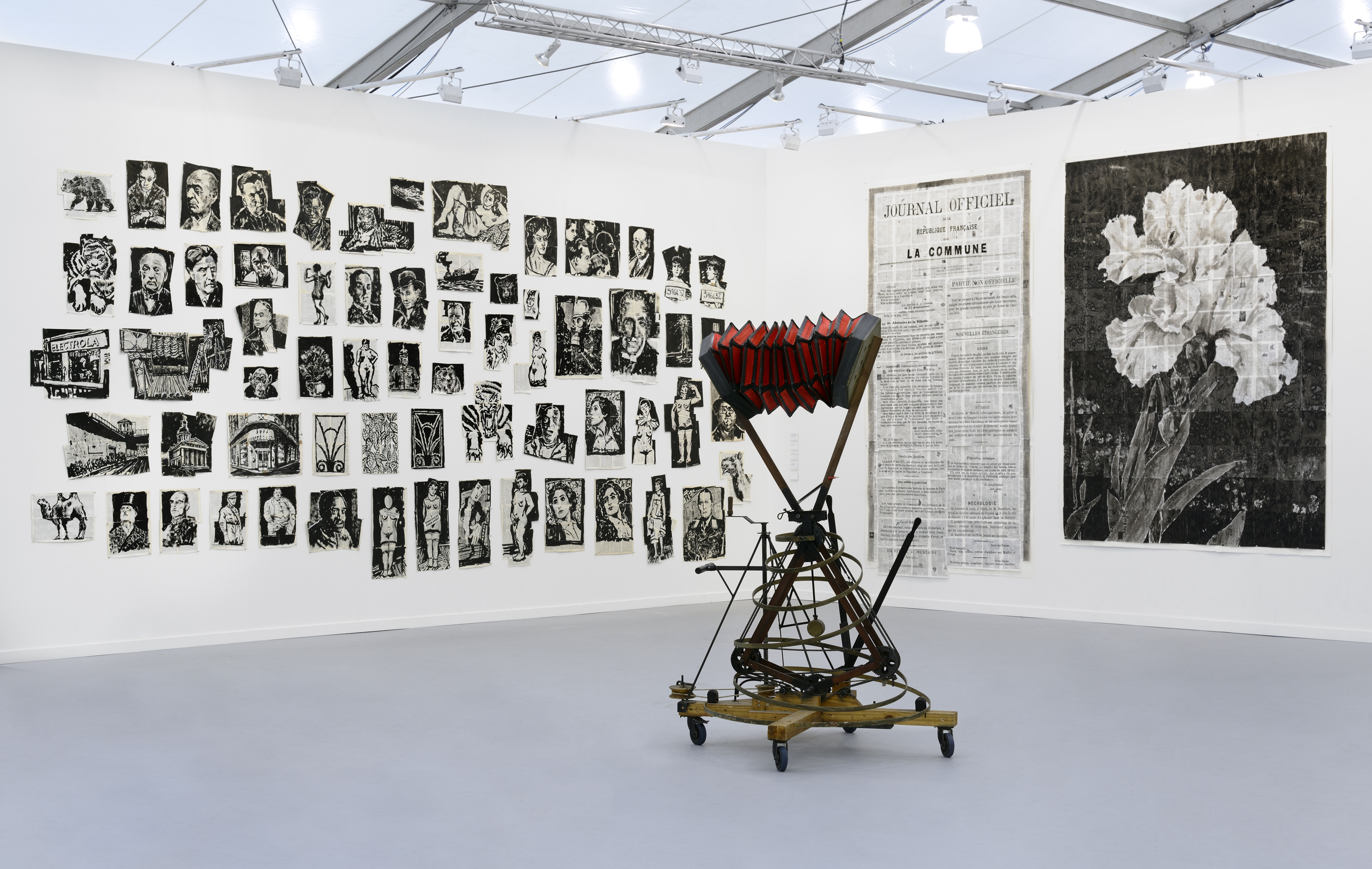
Howard Fried at The Box
Frieze was surprisingly absent of photography; booths tended to focus more on sculpture, painting and installation. Therefore, The Box’s presentation of Reconciliation Studies from The Decomposition of My Mother’s Wardrobe, a series of photographs by Vallejo, California-based conceptual artist Howard Fried, stood out. In the images, which were arranged in triptychs, items from the wardrobe of the artist’s mother, Rose K Fried, who passed away in 2002, were photographed as if for a Normcore fashion magazine. The items were depicted on a hanger, being worn by a young model, and in close-up.
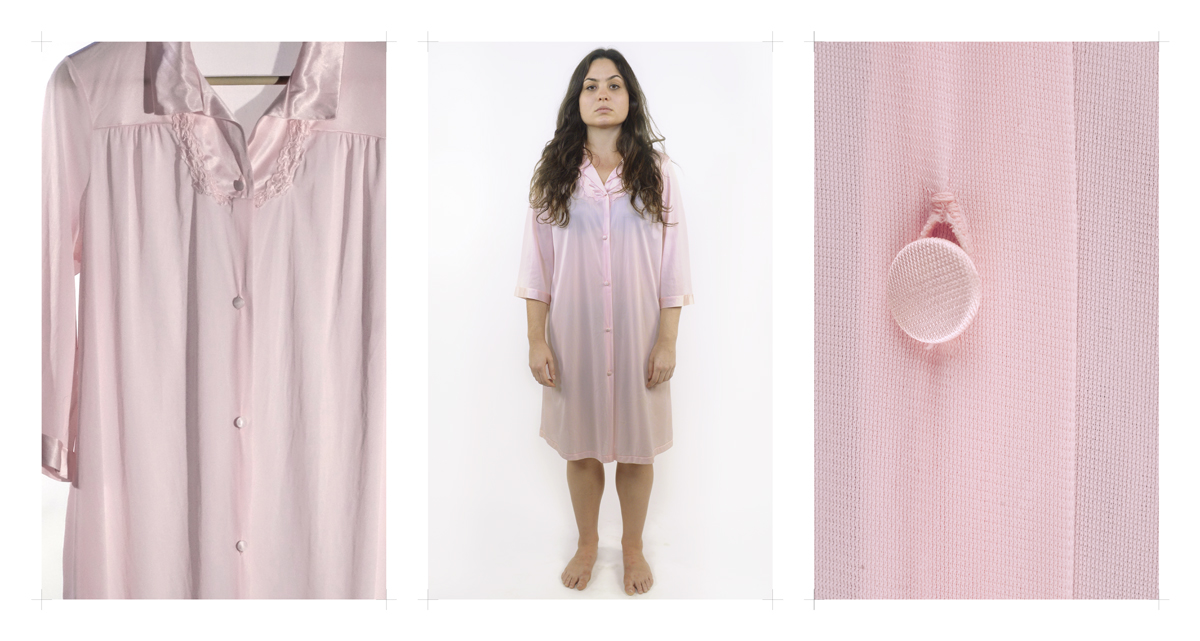
The series might have come off as cutesy, a sort of nod to a Los Angeles hipster aesthetic, if not for a sense of intimacy captured by the artist. Each image represents the act of giving the item away to the person wearing it—and in turn, the artist (perhaps) both unburdening and depriving himself of his mother’s most intimate possessions. The possessions themselves appear as a sort of metaphor for heartbreak: cheap fluffy socks and a quilted floral jacket—the things a person might wear if they were seeking comfort and warmth. The series also arguably represents a type of time capsule and an anthropologic study, where the clothing presents the summary of an American life lived.
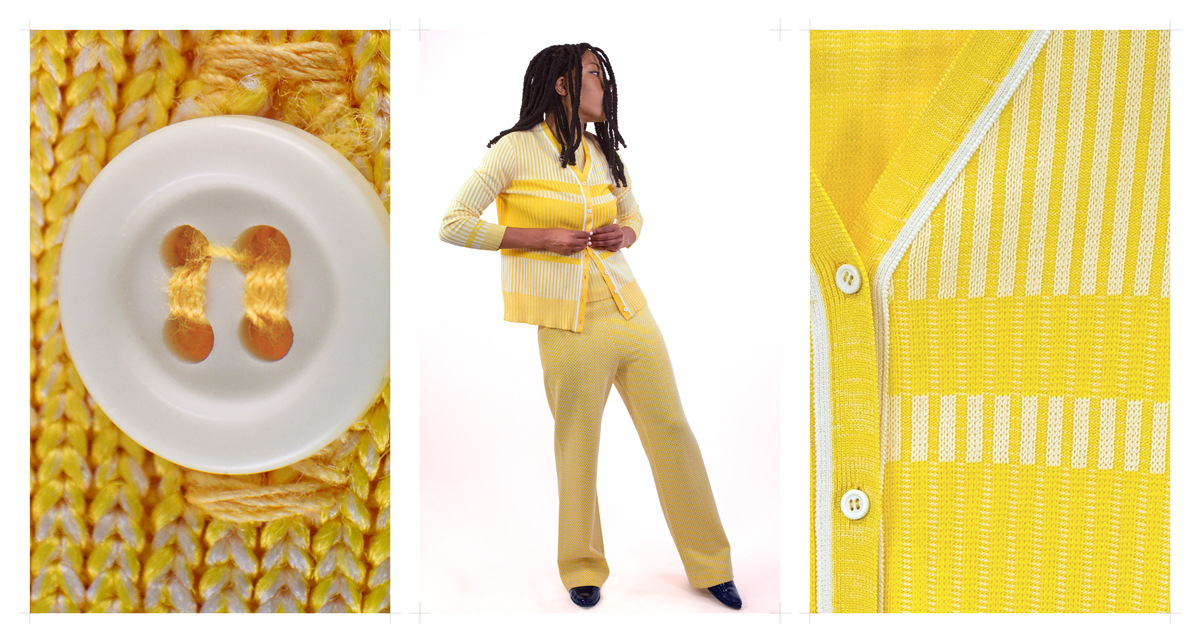
Various artists at Canada
At first glance, Canada’s booth was almost an eye sore. The New York-based gallery recruited local artist Katherine Bernhardt to curate the space. Her husband, Youssef Idia sourced brightly coloured Moroccan shag carpets to line every inch of the floor. While every inch of wall space was covered in brightly coloured works by an array of artists including Jason Stopa, Annie Pearlman, and Jess Fuller. Even the floor space itself was filled with a plinth on top of which lay crystal balls by Elizabeth Ferry; a painted vase by Elisabeth Kley; and a chaise lounge by Katie Stout.

Upon closer inspection, the booth revealed itself to be a sort of contemporary bazaar in which one could encounter both who and what is most trendy currently in the New York art world. Present were paintings on strips of coloured fabric by Katherine Bernhardt, who was featured in W Magazine’s Drake-inspired ‘art issue’ in 2015; a series of acrylic-based spray painted works shaped like a pair of jeans, a set of lips, and a shirt on a hanger by Sadie Laska, who was previously known for founding the New York sound band I.U.D. with Lizzi Bougatsos; and the crystal balls, which tap into a current interest in both kitsch and the supernatural, by Elizabeth Ferry, formerly the assistant of Joyce Pensato. Whether you like the works or not, there’s something exciting about walking into a vibrantly carpeted space, and being surrounded by clever art that all of the cool kids, or at least the cool kids with all of the money, are collecting.

Maurizio Cattelan at Tribute to the Daniel Newburg Gallery (1984-1994)
Part of Frieze Projects, a series of artists’ commissions curated by High Line Art director Cecilia Alemani—also the wife of New Museum director Massimiliano Gioni—a Tribute to Daniel Newburg Gallery was a recreation of a 1994 show by Maurizio Cattelan that ran at the now defunct gallery. Entitled Enter at Your Own Risk – Do Not Touch, Do Not Feed, No Smoking, No Photographs, No Dogs, Thank you (1994), the show consisted of a live donkey munching hay underneath a crystal chandelier. It’s very rare that one encounters a live farm animal in a city, let alone at an art fair. For this reason alone, the booth was a draw and people lined up to enter the space of the booth, where they were allowed to pet the donkey as long as the donkey was within reach, and amenable.
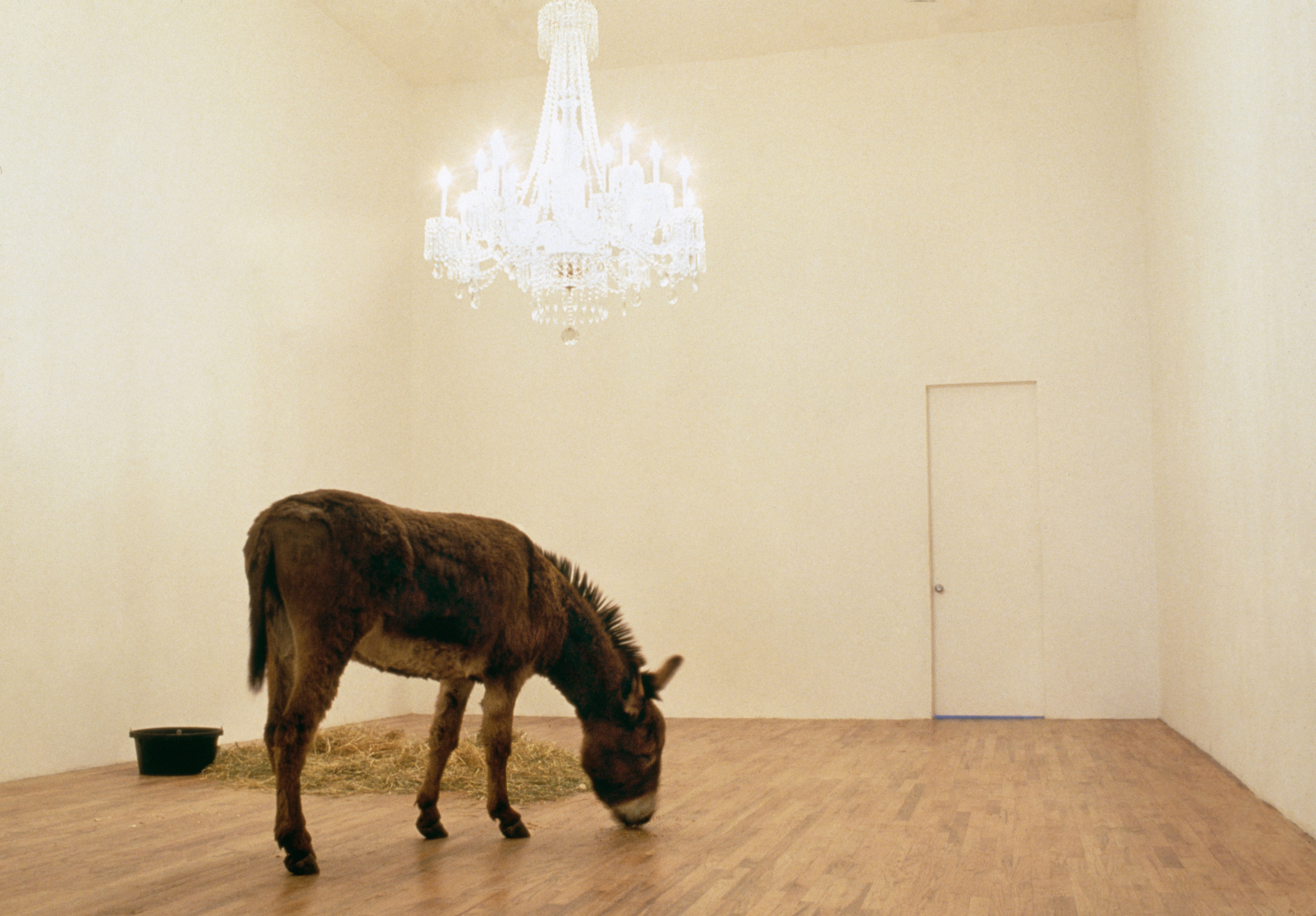
Beyond being a novelty, the work provided an interesting framework to view the fair. The 1994 exhibition represented Cattelan’s debut in the New York art world. Originally, he wanted to knock down the wall that separated Daniel Newburg Gallery from David Zwirner Gallery next door, planning to replicate the Zwirner exhibition. When this, and other ideas, were rejected, Cattelan decided to exhibit a live donkey—a symbol of his inability to produce a feasible or decent idea for a show. In the context of the art fair, a re-enactment of Cattelan’s show and the presence of the donkey arguably reflects audience fatigue over art fairs in general. No one admits to enjoying them. Yet no one has a solution to make them any better. And still, they continue to exist—and thrive, if the massive lines at Frieze were any indication. The donkey represents not so much the lack of good ideas at any art fair, but instead, the stubbornness of the art world to embrace them as a lasting part of the ecosystem. Should we capitulate to the art fair like the donkey capitulates to his captivity? If there are more live animals for petting in the future, then I say ‘yes’. —[O]

